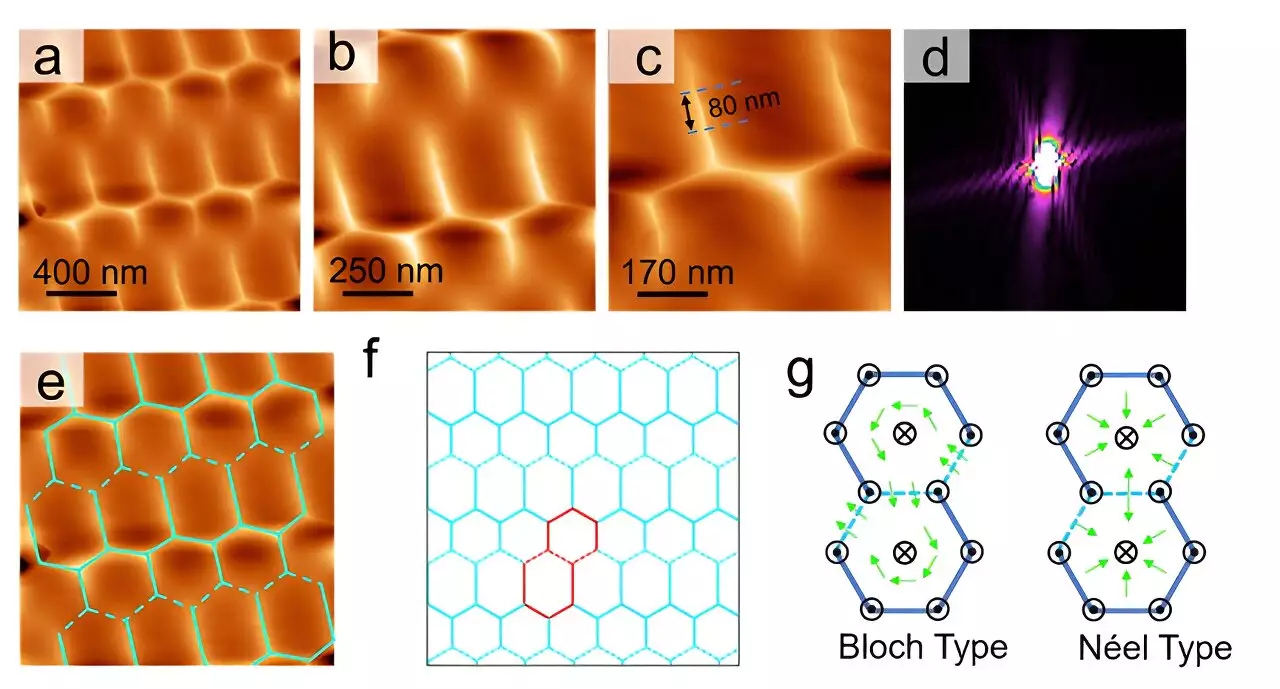Intrinsic magnetic structures within materials have long intrigued physicists, particularly those examining the unusual properties resulting from unique lattice formations. A kagome lattice, with its distinct connectivity reminiscent of a woven bamboo mat, exhibits phenomena that challenge conventional understanding of magnetism and superconductivity. A recent study from a collaborative research group in China has made significant strides in this domain, using advanced technologies to unveil the complexities hidden within these lattices.
The study, led by Prof. Lu Qingyou from the Hefei Institutes of Physical Science, harnessed a combination of cutting-edge techniques, including magnetic force microscopy (MFM), electron paramagnetic resonance spectroscopy, and micromagnetic simulations. These tools allowed the team to peer deeply into the magnetic configurations of a binary kagome Fe3Sn2 single crystal, overcoming the limitations faced in previous attempts to discern the intrinsic properties of kagome lattices. Published in the prestigious journal Advanced Science, their findings mark a pivotal moment in the field.
The research team discovered a distinctive magnetic array characterized by a broken hexagonal structure. This phenomenon arose from the interplay between the inherent hexagonal symmetry of the lattice and uniaxial magnetic anisotropy. Such intrinsic spin patterns exhibit the potential for topological magnetism, a concept that posits the importance of the material structure in defining its magnetic characteristics. This revelation adds a new dimension to the understanding of magnetic order in materials.
An intriguing aspect of the research lies in the findings regarding phase transitions within the Fe3Sn2 single crystals. Contrary to earlier theories that posited a first-order transition, the researchers noted that the magnetic reconstruction occurred through a second-order or weak first-order transition. This revelation not only revises prevailing scientific assumptions but also reclassifies the low-temperature magnetic state as an in-plane ferromagnetic arrangement, challenging previous notions of a spin-glass state.
The development of a new magnetic phase diagram tailored to Fe3Sn2 opens the door to exciting possibilities for exploring topological magnetic structures. The quantitative data derived from MFM measurements highlighted significant out-of-plane magnetic components at low temperatures, providing further evidence of the complex behavior within these lattices. In the context of quantum computing and high-temperature superconductivity, the implications of this research could be transformative.
As scientists seek to unravel the intricacies of topological phases, the results from this research group illuminate an essential pathway. Their findings not only enhance our comprehension of kagome lattices and their magnetic properties but also pave the way for novel applications in technology. The importance of understanding intrinsic magnetic structures cannot be overstated, as these developments are likely to influence the next wave of advancements in quantum computing and materials science. The journey, fueled by curiosity and innovative methodologies, continues to unfold, promising richer insights into the fundamental nature of magnetism.


Leave a Reply